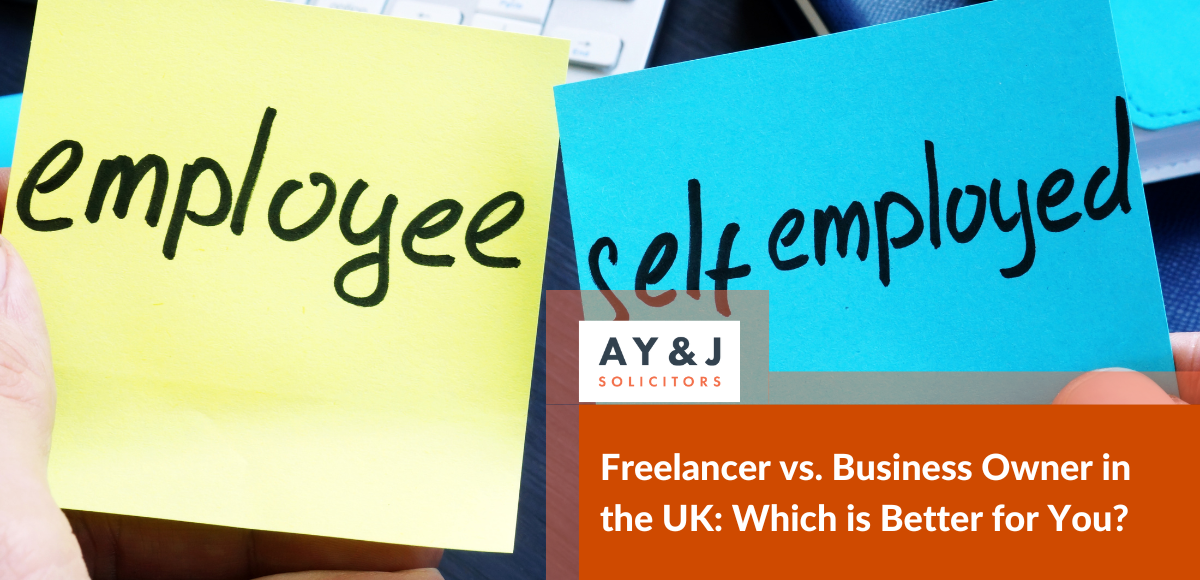Disclaimer: The information in this blog is accurate as of its publication date. Any updates after that date are not reflected here.
When you are making a switch from a Partner visa to a Skilled Worker visa in the UK, the most important thing you need is a valid job offer from a UK employer. This employer must have a valid sponsor licence and should be willing to sponsor your Skilled Worker visa. Only then can you go forward with your UK visa switch process. Given the costs involved in making the application and the importance of success, it is vital the application is prepared meticulously.
This visa switch allows your residence in the UK to be linked to your job sponsorship as opposed to a genuine relationship with your partner. However, before you switch your visa, it is essential to look at the pros and cons and other effects of Skilled Worker visa vs. Partner visa in the UK.
Understanding the Differences: Partner Visa vs. Skilled Worker Visa in the UK
The Skilled Worker Visa is designed for people who have received a confirmed job offer from a UK-based sponsor. You will be required to meet the English language proficiency at CEFR level B1, in addition to demonstrating that the job and role are genuine by showcasing your skills and experience. This transition procedure is not straightforward. It requires careful planning and attention to all requirements and the necessary supporting documentation. So, before starting the UK visa switch process, look at the differences of Skilled Worker visa vs. Partner visa in the UK.
The Advantage of Staying on a Partner Visa
Also known as the UK Spouse visa, a Partner visa allows the flexibility to stay in the UK without the need to get a sponsored job. This means there will be no work obligations that tie your immigration status to employment. You also don’t need to deal with a lot of work limitations, like only being allowed to work for a sponsored employer or applying for a new Skilled Worker visa if you need to change jobs.
The Advantage of Switching to a Skilled Worker Visa
The biggest advantage when you switch from a partner visa to a skilled worker visa is the independence you get. Your immigration status is no longer dependent on your settled or British partner. Moving to a Skilled Worker visa will allow you to have more control over your own immigration status.
Financial Considerations: Costs & Salary Requirements
With new updates in immigration rules and UK Immigration and Visas (UKVI) policy guidance, understanding the financial implications is crucial for a smooth transition. A Partner visa is for dependents to come to the UK and live with their British or Settled partners. Additionally, it gives freedom to your choice to study or work in the UK. On the other hand, a Skilled Worker visa is aimed at skilled workers to work for a UK company and contribute to the UK workforce.
The following is a list of all the finances you’d have to consider.
- Satisfy the minimum income criterion of at least £38,700 per year or the ‘going rate for your job role
- The visa fees for application inside the UK can range from £827 to £1,636. The length of your visa will decide the exact cost
- There is an Immigration Health Surcharge (IHS) fee of £1,035 per year
- Show sufficient funds of at least £1,270 to prove you can support yourself.
Impact on ILR (Indefinite Leave to Remain) Eligibility
First of all, to meet the eligibility for an ILR application, you need to maintain a minimum 5-year residency in the UK meeting all ILR requirements. There is a crucial ILR impact on a visa switch in the UK. Whenever an individual switches their visa category, their continuous residency period or ‘ILR clock’ will be reset. For instance, if you change your visa to Skilled Worker after spending a period of 2.5 years on the Partner visa – the ILR clock will begin once again. As a result, you can only meet the ILR eligibility after completing another 5 years on the work visa.
The impact of Indefinite Leave to Remain (ILR) on a visa switch in the UK presents a significant disadvantage. Individuals on a Partner visa are strongly encouraged to carefully evaluate how this may affect their long-term immigration status.
Visa Renewal & Residency Implications
A Partner Visa is initially granted for 2 years and 9 months. After this period, you have the chance to extend your visa. After staying a total of 5 years on the Partner Visa in the UK, you can make an application for Indefinite Leave to Remain (ILR) as long as you meet all the ILR requirements. Transitioning to a Skilled Worker visa will reset your ILR clock. So you will need to spend 5 continuous years to meet the eligibility for ILR.
If you make the switch from a Partner visa to a Skilled Worker visa in the UK, you need to wait 5 more years before you can apply for ILR. Instead, if you choose to opt for a Partner visa extension, you only need to wait another 2 years and 3 months to satisfy the ILR criteria. Then, you can submit your ILR application and achieve permanent residency.
Which Visa Offers More Stability?
When you look at the conditions of the two visa categories, the Partner Visa provides better stability. A Partner visa holder is free to work any job, and they don’t need visa sponsorship from a licenced employer. Moreover, they are not even required to satisfy the salary thresholds. In other words, they can apply for different jobs or even open their own business.
In contrast, a Skilled Worker’s immigration status is tied to a specific job and employer. If the employment ends, the visa status may be jeopardised. In such a case, they need to find another employer to sponsor them, or else the Home Office will inform them to leave the country.
Overall, the Partner visa holder will benefit from better work rights on Partner visa vs. Skilled Worker visa. However, if your main intention is to work in the UK, then the Skilled Worker visa can make way for higher income and access to better career options.
Step-by-Step Guide – How to Switch from a Partner Visa to a Skilled Worker Visa in the UK
The applicants must go through the following process in order to switch from a Partner visa to a Skilled Worker visa in the UK.
1. Job Offer:
Obtain a valid employment offer from a Home Office-approved sponsor.
2. Certificate of Sponsorship (CoS):
The UK employer that will sponsor you needs to have a sponsor licence — this will enable them to issue you a COS (Certification of Sponsorship).
3. Online Application:
Visit the UK government website, fill out the online Skilled Worker application form and make the IHS and visa payment fees, and review all the details again before you submit.
4. Supporting Documents:
Upload all the following necessary documents requested by the Home Office:
- Your valid passport or any other travel documents
- Certificate of Sponsorship (CoS) document with its reference number
- Proof of English language proficiency of minimum level B1
- Evidence of having at least £1,270 in your bank account to support yourself.
5. Relevant Fees:
Pay the application fee. The amount varies from £827 per person (for only up to 3 years) to £1,639 per person (for more than 3 years). You also need to pay the immigration health surcharge if you want access to healthcare services in the UK.
6. Biometric Details:
Go to the biometric appointment at the TLScontact centre nearest to you. They will scan your fingerprints and take your photograph as biometric details.
7. Official Decision
Once you have submitted the application and done all the required steps, the Home Office officers will process your application. This will usually take 8 weeks. Waiting time is over when you receive a letter confirming whether your visa is approved or denied.
The Final Decision: Which Visa is Better for Your Situation?
If your primary intention is to earn a better income and advance your career, you will get better benefits by switching to a Skilled Worker visa. However, if you prioritise flexibility in your day-to-day life and want to achieve permanent residency much faster, then it is better to stay on the Partner visa. In this case, you can just apply for a visa extension when the current visa validity expires.
Our team of skilled worker visa experts can offer personal immigration advice and guidance on your UK visa switch process. We will support your application to switch from a Partner visa to a Skilled Worker visa in the UK until the Home Office reaches a decision. Book a call with our immigration team to get end-to-end visa guidance.









